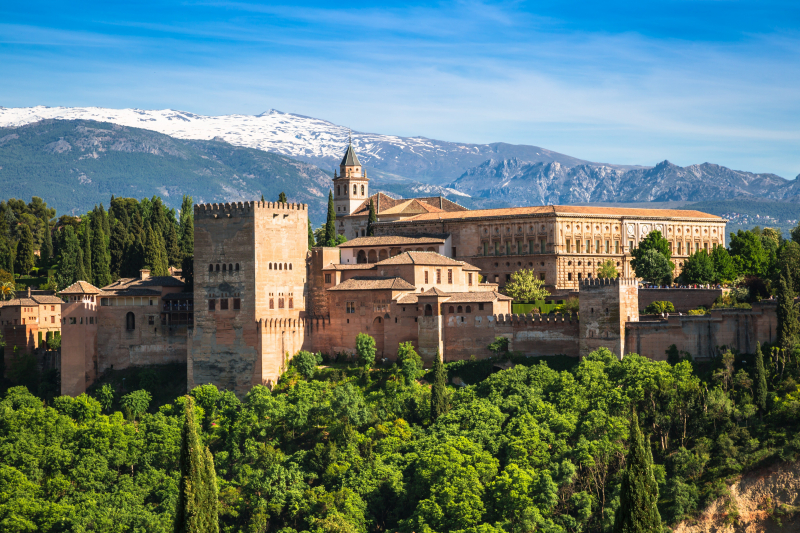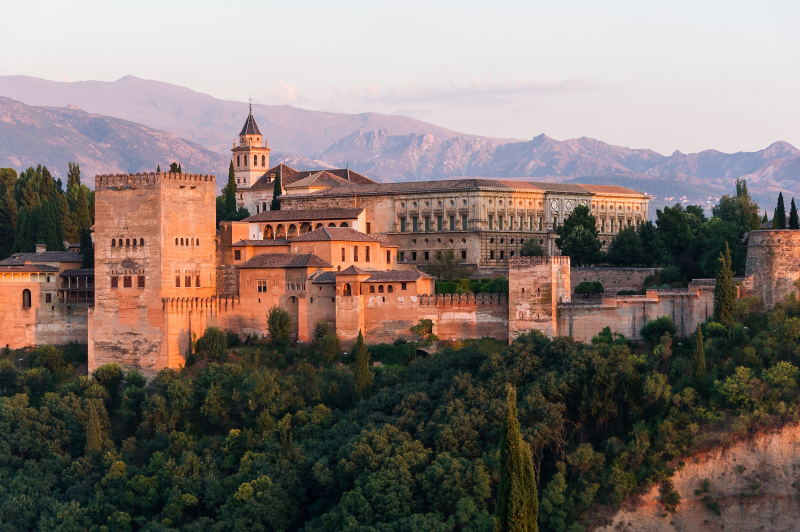The Alhambra
In Granada, Andalusia, Spain, there is a complex of palaces and fortifications known as the Alhambra. In addition to having remarkable instances of Spanish Renaissance architecture, it is one of the most well-known Islamic architectural monuments and one of the historically Islamic world's best-preserved palaces. Since the 19th century, the Alhambra has undergone multiple restorations, making it one of the first Islamic structures to be the focus of contemporary scientific investigation. It is currently a UNESCO World Heritage Site and one of Spain's top tourist destinations. The Alhambra was a distinct city from the rest of Granada below during the Nasrid dynasty. The majority of the facilities found in a Muslim city were there, including a Friday mosque, hammams (public baths), streets, residences, artisanal workshops, a tannery, and an advanced water supply system.
It was a royal city and fortress with at least six significant palaces, the most of which were situated around the northern side where they provided views over the Albaicn neighborhood. The Mexuar, the Comares Palace, the Palace of the Lions, and the Partal Palace are the most well-known and best-preserved structures and are currently the primary draws for tourists. Historical documents and recent digs have revealed information about the other palaces. The Alcazaba fort is at the westernmost point of the Alhambra. Along the Alhambra's walls are are several lesser towers and protected entrances. The Generalife, a former Nasrid country house and summer palace surrounded by ancient orchards and contemporary manicured gardens, is outside the Alhambra walls and situated close by to the east.
Location: Granada, Andalusia, Spain









